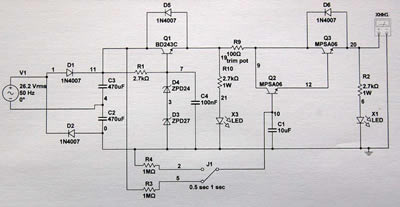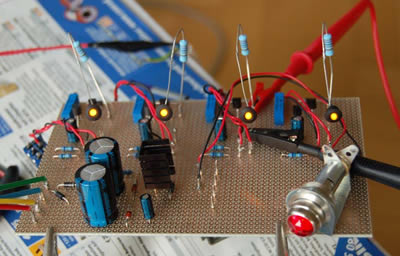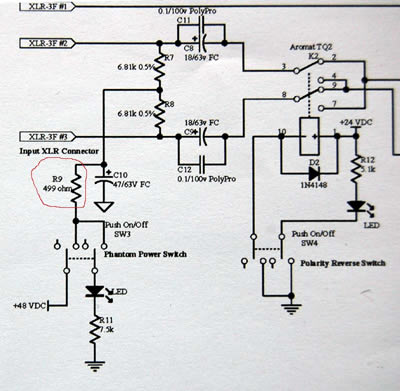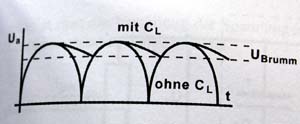barthman.de
Well-known member
I'm building a housing solution for 4 Telefunken V672 Mic/Line preamps. In addition to the preamps the housing includes a Telefunken N624 (24 V / 2 A) PSU.
I want to use this PSU to power a second preamp unit which I'll build later (also with 4 preamps). Now I need a second PSU for phantom power. Here in the forum I found two circuits which I've combinated (ramped phantom power and voltage doubling). Here is my circuit (to power one mic) and a photo of the prototype (to power 4 mics).


Now my questions:
1. The PSU works fine (48 V on output ;-) but I'm a beginner in electronics so if somebody have improvment suggestions let me know before I grill my Neumann mic :?
2. The 2k7 resistor (1W) (R2) before the LED is very hot. (I can't touch it) The resistor value seems ok for me (48V-2,2V=45,8V; 45,8V/0,02A= 2.290 ohm; 45,8/2k7=0,017A*45,8=0,779W). Is this ok or is there a problem?
3. On some preamp designs there is a resistor (450 - 500 ohm) before the standard 6k8 resistors (see below). Which function has this resistor?

Thanks for your reply.
I want to use this PSU to power a second preamp unit which I'll build later (also with 4 preamps). Now I need a second PSU for phantom power. Here in the forum I found two circuits which I've combinated (ramped phantom power and voltage doubling). Here is my circuit (to power one mic) and a photo of the prototype (to power 4 mics).


Now my questions:
1. The PSU works fine (48 V on output ;-) but I'm a beginner in electronics so if somebody have improvment suggestions let me know before I grill my Neumann mic :?
2. The 2k7 resistor (1W) (R2) before the LED is very hot. (I can't touch it) The resistor value seems ok for me (48V-2,2V=45,8V; 45,8V/0,02A= 2.290 ohm; 45,8/2k7=0,017A*45,8=0,779W). Is this ok or is there a problem?
3. On some preamp designs there is a resistor (450 - 500 ohm) before the standard 6k8 resistors (see below). Which function has this resistor?

Thanks for your reply.



